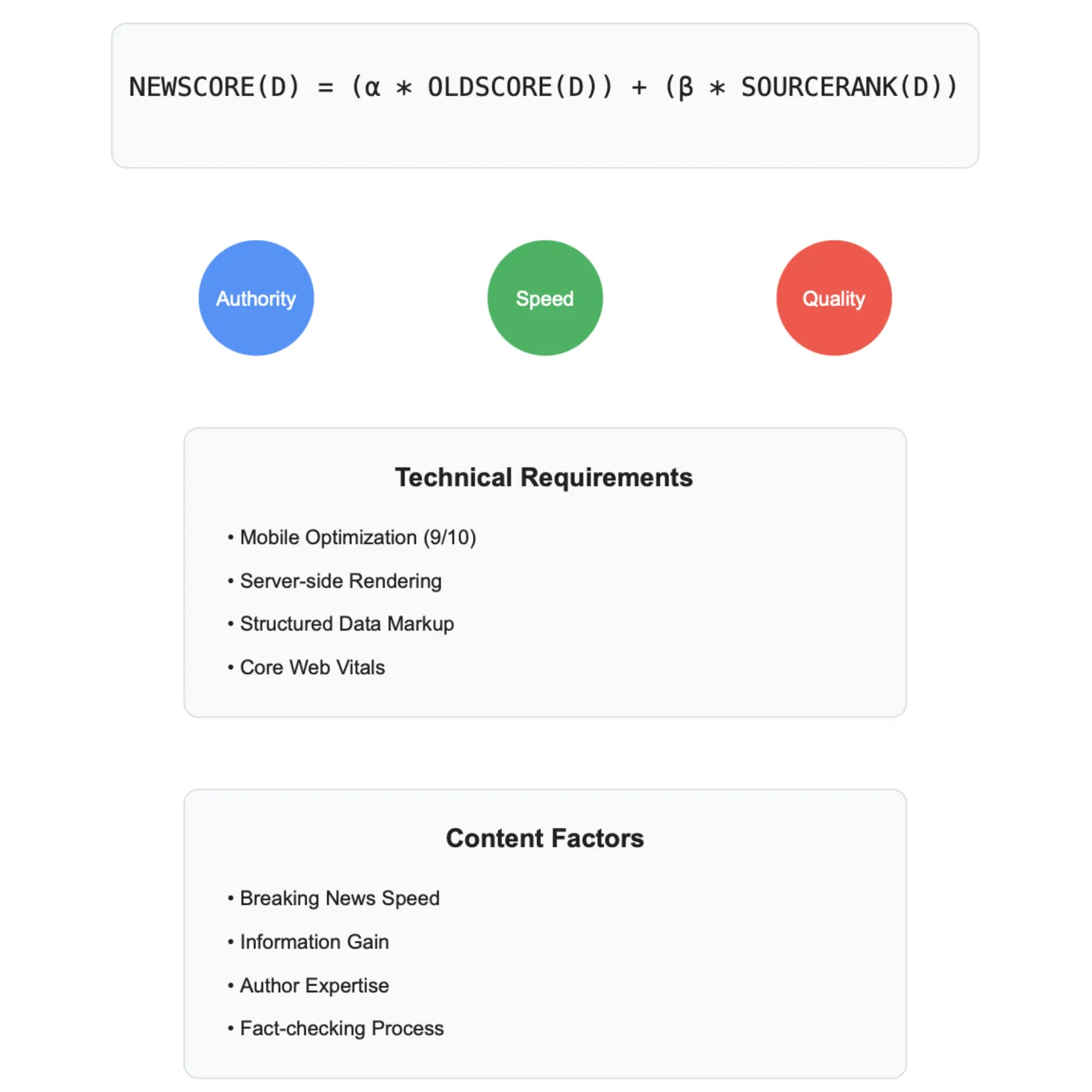How Google news rankings affect news sites visibility
Analysis of Google's news ranking system reveals technical details about how the search engine determines news sites visibility.

Seven years after filing a patent Systems and methods for improving the ranking of news articles, Google's approach to ranking news sites continues to heavily rely on source authority and content freshness. According to documents from Google's Publisher Center, the search engine uses a complex formula that combines historical site reputation with article-level metrics to determine visibility in news results.
The formula, NEWSCORE(D) = (alpha * OLDSCORE(D)) + (beta * SOURCERANK(SOURCE(D))), assigns each article a score based on previous performance and source credibility. According to Harry Clarkson-Bennett's analysis published on February 9, 2025, this scoring system gives established news brands significant advantages in search visibility.
Google's official documentation confirms that participation in advertising programs like AdSense has no effect on a site's ranking in Google News. The search engine states it "doesn't accept payments to expedite or improve a site's search appearance or ranking."
The technical implementation relies on multiple weighted factors. An analysis of Google's patent documentation reveals that source rank calculations incorporate metrics including international reach, breaking news speed, and citation patterns from different regions. News sites receive a consensus score between 0 and 1, with a minimum threshold of 0.4 required to qualify for rich features like featured snippets.
For article-level scoring, Google examines factors like originality, relevance to search queries, and timeliness. The system places particular emphasis on information gain - the ability to advance developing stories with new details rather than simply aggregating existing coverage.
Breaking news speed emerges as a critical factor, rated 9 out of 10 in importance according to internal Google documentation. News sites must optimize for rapid publishing while maintaining accuracy. The search engine's technical specifications indicate that structured data markup helps Google understand article timestamps and updates.
Mobile optimization also plays a key role, with a 9/10 importance rating. Sites must ensure responsive design and fast loading times on mobile devices. Core Web Vitals metrics impact rankings, though speed optimizations provide diminishing returns once baseline performance thresholds are met.
User engagement metrics factor into rankings differently for news content compared to other search results. While traditional engagement signals like time on page hold less weight for news content, click-through rate remains influential. According to the patent documentation, Google stores engagement data in Chrome to help rank articles.
For smaller publishers competing against established news brands, the patent analysis suggests focusing on generating high-quality backlinks and mentions from reputable sources. News sites operating behind paywalls face additional challenges, as restricted access can limit engagement signals.
Technical implementation requires specific structured data markup. News sites must implement NewsArticle schema for articles, Author markup for bylines, and LiveBlogPosting schema for real-time coverage. The documentation emphasizes accurate publication dates across structured data, HTML, and sitemaps.
Server-side rendering proves crucial for news content visibility. While Google's ability to crawl JavaScript has improved, client-side rendered content experiences longer indexing delays. The specification recommends minimizing client-side rendering for core news content.
The ranking system assigns particular weight to author expertise and transparency. News sites must prominently display bylines, author biographies, and evidence of subject matter expertise. Fact-checking processes and clear editorial standards contribute to overall source authority scores.

